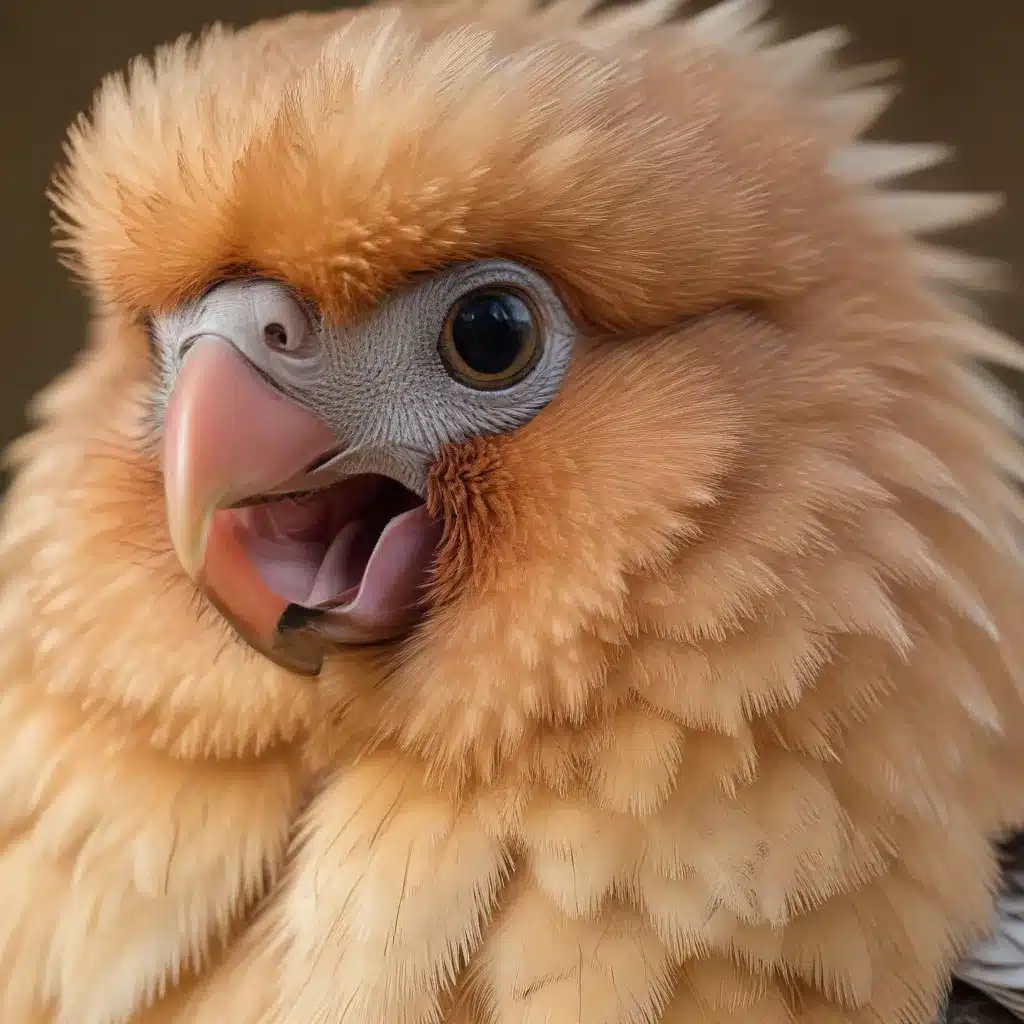
Avian Anatomy and Physiology
As an experienced avian caretaker, I’ve come to appreciate the unique complexities of the avian respiratory system. Unlike mammals, birds have evolved an intricate network of air sacs and tubes that facilitate the efficient exchange of oxygen and carbon dioxide during flight. These specialized adaptations allow birds to power their energy-intensive lifestyles, but they also make the avian respiratory tract particularly vulnerable to various diseases and infections.
The avian respiratory system is a marvel of evolutionary engineering. At its core is the trachea, which connects the mouth and nostrils to the lungs. Branching off the trachea are a series of air sacs that extend throughout the bird’s body, including the abdominal, thoracic, and cervical regions. These air sacs not only provide oxygen to the tissues but also act as bellows, drawing air in and out of the lungs during respiration.
This complex system is further enhanced by the presence of parabronchi, tiny tubes that facilitate gas exchange. Unlike the alveoli in mammalian lungs, parabronchi allow for a continuous, unidirectional flow of air through the avian respiratory tract. This remarkable adaptation enables birds to maintain high metabolic rates and sustain the intense demands of flight.
Common Respiratory Diseases in Birds
While the avian respiratory system is highly efficient, it is also susceptible to a range of infectious diseases that can severely compromise a bird’s health and well-being. As an expert in avian care, I’ve encountered several common respiratory conditions that warrant our attention.
Avian Influenza (Bird Flu)
One of the most concerning respiratory diseases in the avian world is avian influenza, commonly known as “bird flu.” This viral infection can be caused by various strains of the influenza A virus and can have devastating consequences for both domestic and wild bird populations. Symptoms of avian influenza include respiratory distress, lethargy, and sudden death. Certain strains, such as H5N1, can also pose a threat to human health, underscoring the importance of vigilant monitoring and swift containment efforts.
Aspergillosis
Another prevalent respiratory condition in birds is aspergillosis, a fungal infection caused by the Aspergillus genus of fungi. These opportunistic pathogens can take advantage of compromised immune systems or unsanitary living conditions, leading to respiratory symptoms like coughing, wheezing, and difficulty breathing. Aspergillosis can be particularly challenging to manage, as it often requires a combination of antifungal medications and environmental modifications to control.
Mycoplasma Infection
Mycoplasma infections are yet another respiratory threat facing avian species. These tiny, wall-less bacteria can cause a range of respiratory issues, including sneezing, nasal discharge, and respiratory distress. Mycoplasma infections can be highly contagious, spreading quickly through bird populations and causing significant morbidity and mortality if left untreated.
Preventive Strategies
As an avian expert, I firmly believe that the best approach to managing respiratory diseases in birds is through proactive prevention. By implementing comprehensive biosecurity measures, optimizing nutritional intake, and maintaining ideal environmental conditions, we can significantly reduce the risk of respiratory infections and promote the overall health and well-being of our feathered friends.
Biosecurity Measures
Effective biosecurity protocols are the foundation of respiratory disease prevention in avian populations. This includes strict quarantine procedures for new birds, thorough cleaning and disinfection of enclosures, and the implementation of robust sanitation practices. By minimizing the introduction and spread of pathogens, we can create a safer, healthier environment for our birds.
Nutritional Considerations
Proper nutrition is also a crucial factor in maintaining a bird’s respiratory health. A balanced diet rich in essential vitamins, minerals, and antioxidants can help strengthen the immune system and bolster the bird’s ability to fend off respiratory infections. Consulting with an avian veterinarian or experienced nutritionist can help you develop a tailored feeding plan to meet your birds’ unique dietary needs.
Environmental Management
The environment in which birds live can significantly impact their respiratory well-being. Ensuring adequate ventilation, temperature control, and humidity levels can help prevent the buildup of harmful bacteria, fungi, and other respiratory irritants. Regular monitoring and adjustments to the enclosure’s air quality and cleanliness can go a long way in safeguarding your birds’ respiratory health.
Treatment and Care
Despite our best preventive efforts, respiratory diseases can still occur in avian populations. When faced with a respiratory health concern, early diagnosis and prompt intervention are crucial for effective management and successful outcomes.
Early Diagnosis and Intervention
Recognizing the early signs of respiratory distress, such as labored breathing, coughing, or nasal discharge, is essential for timely intervention. Consulting with an avian veterinarian who can perform diagnostic tests, such as cultures or imaging, can help identify the underlying cause and guide the appropriate treatment plan.
Supportive Therapies
Depending on the specific respiratory condition, a range of supportive therapies may be necessary to aid the bird’s recovery. This can include oxygen supplementation, nebulization, and fluid therapy to maintain hydration and respiratory function. Providing a calm, stress-free environment and ensuring the bird’s comfort are also vital components of the treatment approach.
Medication Management
In many cases, targeted medication may be required to address the underlying respiratory infection. Antibiotics, antifungals, or antivirals may be prescribed by the veterinarian, depending on the causative agent. It is essential to strictly follow the dosage and administration instructions to ensure the effective treatment of the respiratory condition while minimizing the risk of adverse effects.
By understanding the complexities of avian respiratory anatomy, recognizing common respiratory diseases, and implementing comprehensive prevention and treatment strategies, we can empower avian caretakers to safeguard the respiratory health of their feathered companions. As an experienced expert in this field, I’m dedicated to sharing this knowledge and encouraging proactive measures to ensure the long-term well-being of birds under our care.
For more information and resources on avian health and care, I encourage you to visit the Mika Birds Farm website, where you’ll find a wealth of information, expert advice, and a supportive community of bird enthusiasts.


